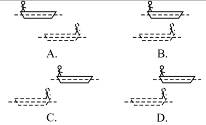Mark Twain once observed that giving up smoking is easy. He knew, because he’d done it hundreds of times himself. Giving up for ever is a trifle more difficult, apparently, and it is well known that it is much more difficult for some people than for others. Why is this so
Few doctors believe any longer that it is simply a question of will power. And for those people that continue to view addicts as merely "weak", recent genetic research may force a rethink. A study conducted by Jacqueline Vink, of the Free University of Amsterdam, used a database called the Netherlands Twin Register to analyze the smoking habits of twins. Her results, published in the Pharmacogenomics Journal, suggest that an individual’s degree of nicotine dependence, and even the number of cigarettes he smokes per day, are ply genetically influenced.
The Netherlands Twin Register is a voluntary database that contains details of some 7,000 pairs of adult twins (aged between 15 and 70 ) and 28,000 pairs of childhood twins. Such databases are prized by geneticists because they allow the comparison of identical twins (who share all their genes) with fraternal twins (who share half). In this case, however, Dr. Vink did not make use of that fact. For her, the database was merely a convenient repository of information. Instead of comparing identical and fraternal twins, she concentrated on the adult fraternal twins, most of whom had completed questionnaires about their habits, including smoking, and 536 of whom had given DNA samples to the register.
The human genome is huge. It consists of billions of DNA "letters", some of which can be strung together to make sense (the genes) but many of which have either no function, or an unknown function. To follow what is going on, geneticists rely on markers they have identified within the genome. These are places where the genetic letters may vary between individuals. If a particular variant is routinely associated with a particular physical feature or a behavior pattern, it suggests that a particular version of a nearby gene is influencing that feature or behavior.
Dr. Vink found four markers which seemed to be associated with smoking. They were on chromosomes 3, 6, 10 and 14, suggesting that at least four genes are involved. Dr. Vink hopes that finding genes responsible for nicotine dependence will make it possible to identify the causes of such dependence. That will help to classify smokers better (some are social smokers while others are physically addicted) and thus enable "quitting" programs to be customized.
Results such as Dr. Vink’ s must be interpreted with care. Association studies, as such projects are known, have a disturbing habit of disappearing, as it were, in a puff of smoke when someone tries to replicate them. But if Dr. Vink really has exposed a genetic link with addiction, then Mark Twain’s problem may eventually become a thing of the past.
It can be inferred from the last paragraph that()
A. Dr. Vink does not treat her research results with enough care
B. there are always people who try to copy other’s researches
C. Mark Twain’s problem will be other smokers’ problem in the future
D. many such researches as Dr. Vink’ s have not been done thoroughly
参考答案:D
解析:
[解题思路] 推理题。文章最后一段说“类似的研究往往有着一种令人不快的习惯——消失”,因此可以证明很多类似Vink博士所进行的研究没有被进行到底。

